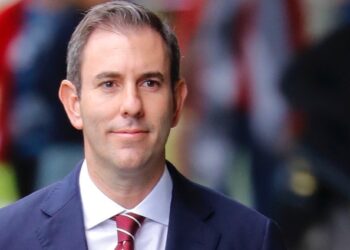The Australian Prudential Regulation Authority (APRA) is worried that it “cannot be confident” that super fund trustees are adequately implementing the Retirement Income Covenant (RIC).
A joint thematic review into the first year of the RIC was conducted by APRA and the Australian Securities and Investments Commission (ASIC) earlier this year to explore which areas had seen the most progress and where key gaps remain.
In a speech this week, APRA deputy chair Margaret Cole discussed the review’s findings, focusing on three particular issues of concern.
There is no singular fund or trustee that has “fully cracked” the RIC yet, she said.
These are:
- Understanding members’ needs in retirement
- Designing fit-for-purpose retirement assistance
- Overseeing retirement income strategy implementation.
“Standing here more than a year on from the introduction of the new covenant, APRA and ASIC cannot be confident that trustees – as a whole – have made adequate progress in satisfying three elements that we consider core to effective implementation of the covenant by the industry,” Cole told the Conexus Retirement Conference.
“Government, regulators, and industry bodies all have roles to play in enabling and supporting the superannuation industry to succeed in delivering strong outcomes in retirement for all members of the Australian community. But ultimately, it is trustees who must take the opportunity to design and implement member-centric retirement income strategies. After all, it’s trustees who know their members best.”
The next steps for APRA to focus on will be the supervision of trustees, APRA’s prudential framework and bold strategies from trustees.
In the final quarter of the year, APRA will seek trustees’ self-assessment against the thematic review, including how they assess themselves against better practice examples. Trustees are encouraged to “observe and learn from leading practice”, especially those which have insufficient progress.
Bold strategies could include offers with specific drawdown patterns, providing budgeting tools, expenditure calculators, improving factual information about retirement and the provision of longevity solutions.
Cole said: “Leading a superannuation fund that focuses on providing strong outcomes to members in both the accumulation phase and in retirement requires a fundamental step change in mindset and capability. As trustees evolve the strategies for their funds, some may recognise that they do not currently have the requisite capability to do both successfully, nor do they plan to develop ‘success in retirement’ as a core competency.
“I encourage trustees to be clear and courageous in their overarching fund strategies and, where necessary, make strategic decisions to partner with other organisations to best serve their members.”





How naive – “after all, it is the trustees that know their members best”.
The trustees “do not deal individually with each and every member” so it is well nigh impossible for the Trustees to provide independent, individual information to each and every member to meet the member’s circumstances in retirement. Further, labelled allocation investment mixes such as Balanced, Conservative, Moderate and High Growth allocation mixes currently employed by Trustees of Superannuation Funds, one size fits all solutions do not work.
Accumulated Superannuation may very well be the second largest asset after the family home of most members.
In retirement each and every member’s retirement income plan needs constant review and monitoring as to both investment allocation with respect to the social security welfare dollar assistance, the inherent risk involved to meet the member’s goals.
However over the last four decades successive governments have under the guise of so called “holistic financial planning” destroyed this personal monitoring facility between the member and the introducing intermediary with expensive Royal Commission hearings the cost of this personal monitoring which amounted to only about $3,000 per $1,000,000 member balance annually from inception to final payment on death of the member.
It was both in the member and the introducing intermediary financial interests to continually monitor and tweak the investment allocation to the member’s risk.